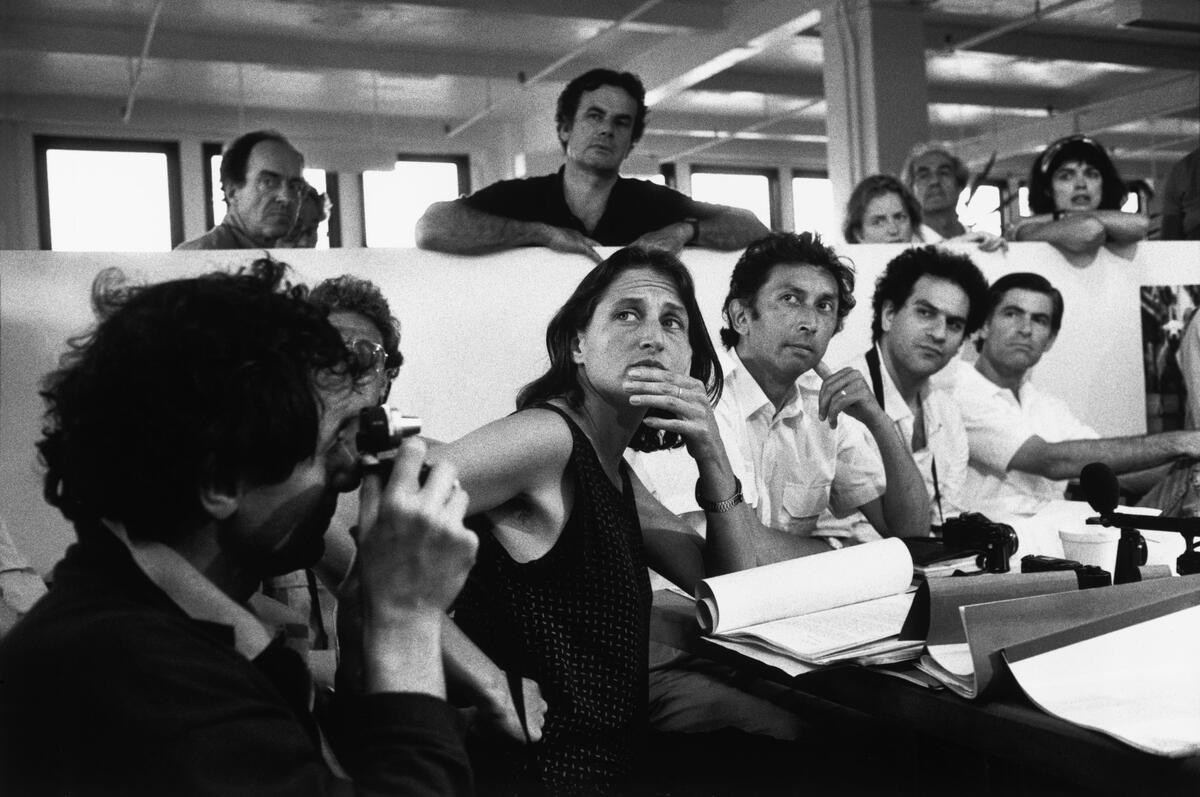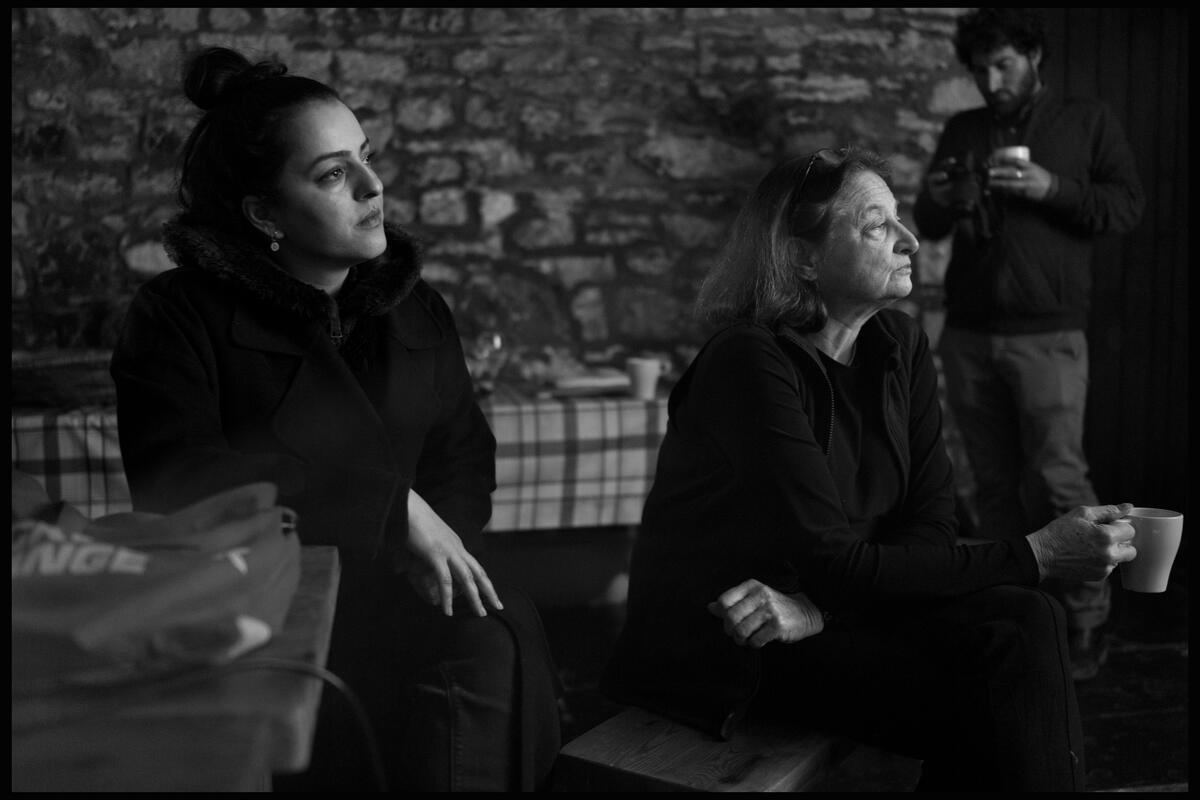A New Chapter for the Cooperative: An Interview with Cristina de Middel
Magnum President Cristina de Middel opens up about the struggle and hopes for photojournalists today, and how a new cooperative, open to collectors and the general public, seeks to support the creation of new work from Magnum photographers
Earlier this month, the cooperative announced a new initiative: the Collector Cooperative. The aim of the cooperative, which appeals to collectors around the world, is to support the creation of new work from Magnum photographers.
One of the initiatives set to be supported by the Cooperative is Magnum Chronicle, an annual print magazine that will seek to respond to a contemporary theme or issue via new work from Magnum photographers. Conceived as a way to combat the difficulties for independent photojournalists and the free press to work on new assignments today, the first issue hopes to look at the United States in the run-up to, and during, the upcoming election, due for publication in November.
In the interview below, Magnum President Cristina de Middel opens up about the relationship between Magnum and photojournalism, the challenges and difficulties that many reporters face today, and how the idea for the new Cooperative, as well as the Chronicle, was conceived.
For more information about how to join the Collector Cooperative and support Magnum Chronicle, click here.
You started your photography career as a reporter for a local newspaper in Spain. What led you to focus on the power of telling stories through images?
Cristina De Middel: “I think I became a photojournalist because I’ve always been a curious person, and I tend to push things to the limit. Taking pictures of what’s happening around me to document it or explain it to others is just an extreme and proactive way of being curious. The first time I took photos, I felt a sense of power, and I enjoyed the responsibility that came with simply holding the camera. The combination of satisfying that curiosity and the thrill of responsibility can be addictive, making you obsessed with being in the front row of events.
“I was, of course, just a local photojournalist, but I spent every weekend and holiday chasing bigger stories, trying to connect with the global human drama through the smaller stories of the people I met. It felt like, in some small way, I was contributing to the collective memory that would eventually become history.”
Photojournalism is very much integral to the history of Magnum and its photographers. What role did documentary photography play in the foundation of the cooperative in 1947?
Cristina de Middel: “Documentary photography was at the core of Magnum’s creation in 1947. The founding photographers wanted to break free from the constraints of news agencies and tell stories with more depth and truth, capturing the world in flux. At the same time, Magnum’s foundation consolidated the protection of copyright, allowing photographers to maintain control of their work. This was crucial, as photography had become the lens through which we understood the world, and Magnum gave photographers both the creative freedom and the agency to shape that understanding.”
"Photography, once the perfect tool for understanding the world, now risks becoming an obstacle."
-
Fast forward 77 years, and our way of documenting the world has shifted. People are photographing differently and consuming photography in a totally different context. What does it mean to be a documentary photographer today, and what are the stakes?
Cristina de Middel: “Well, a lot has changed since then, both socially and technologically, yet we still rely heavily on images to navigate the world. Today, both photojournalism and documentary photography face serious challenges, as over 1.8 billion images are created daily — many by people who, just a few years ago, would have been considered the audience. We are witnessing a paradigm shift where the new literacy revolution is a visual one. The line between reality and fiction is increasingly blurred, and the distinction between creator and audience is harder to define.
“At the same time, the sheer volume of images has become so overwhelming that it often dilutes their impact and purpose. The rise of AI-generated visuals adds to this confusion, further blurring the boundaries between fact and fiction. This makes the authenticity that Magnum’s founders fought for more crucial than ever. Photography, once the perfect tool for understanding the world, now risks becoming an obstacle, and the role of trusted documentary photographers is essential in cutting through the noise, offering images grounded in truth, yet rich with personal perspective — just as Magnum always intended.”
Would you say that it is fundamentally a more challenging environment for photographers today, and if so, why?
Cristina de Middel: “The market has had to adapt to the new needs and tastes of society, including the speed at which we consume the images and the little time we have to read and digest them properly. It is a challenging environment for photographers indeed, but I find it much more dangerous for the audience, as we are often left on our own when it comes to deciphering the meaning and purpose of the images that are placed in front of us, and have very few tools to use to get closer to a certain idea of truth and a genuine record of the facts.”
"We are often left on our own when it comes to deciphering the meaning and purpose of the images that are placed in front of us. "
-
How is Magnum, as a cooperative, adapting to the shifting landscapes? Has its values or vision changed over time?
Cristina de Middel: “Magnum’s greatest blessing and curse is the weight of its archive and the responsibility to deliver trustworthy records of contemporary events, while also needing to protect the personal language of its photographers. We strive to stay relevant and sustainable as a business, but it’s increasingly difficult to balance the institution that people recognize with the practical business decisions necessary for adaptation and growth. Change is, of course, essential.
“From the beginning, Magnum has been an exotic bird, requiring unique solutions that often defy standard business practices. But that’s part of who we are — it’s in our DNA. What can we do?”
"If the media cannot host our stories, we have created our own platform, which I hope will have a life as long as Magnum’s"
-
Tell us about the new initiative, Magnum Chronicle, and what it represents for the agency today.
Cristina de Middel: “In the context of the current editorial crisis, where media outlets are dwindling and budgets for long-term, in-depth stories are shrinking, Magnum Chronicle emerges as a necessary platform for the stories our photographers continue to create despite these challenging times. It is a proactive solution that allows us to maintain visibility for the work of Magnum photographers and aligns with the original spirit of Magnum — protecting high-quality, independent reporting. If the media cannot host our stories, we have created our own platform, which I hope will have a life as long as Magnum’s.”
This first issue is set to examine the U.S., ahead of the upcoming election. Why this topic for the first issue?
Cristina de Middel: “The U.S. election has become something of a classic subject at Magnum. Over the decades, multiple photographers have documented the political arena and its unique dynamics, creating both iconic single images and comprehensive bodies of work that continue to resonate. Whether we like it or not, the U.S. election has an impact that extends beyond American borders, making the interest clear.
“It also provides an opportunity for a visual survey of the country from various perspectives and scales. It’s an ideal scenario to explore the small stories that define American society alongside broader debates that could have a global impact. This is where Magnum, as a collective of photographers, excels — each of us can approach the subject from our own path, scale, and angle. The result is an eclectic yet representative portrayal of a moment in time that will prove historically significant.”
What is the Collector Cooperative? What does it mean for people who become members and how do they contribute?
“Magnum Chronicle and the Collector Cooperative are intrinsically linked. For this initiative, we have decided to open up the doors of Magnum and bring in a community of people to be involved in the conception of the Chronicle. Members will have a say in the themes that are tackled and treated via a Press Room, while also being involved in special events and receiving exclusive collectors items.
“It is a way to link the audience with the work that is being produced and it is an investment, yes, but one that we hope will support the future for necessary visual documentation. We are trying to find new ways to protect the meaningful, independent, and trustworthy photojournalism that is integral to Magnum in an age in which this is becoming more and more difficult to sustain. Without the Collector Cooperative, the Chronicle wouldn’t be able to exist.”
For more information about how to join the Collector Cooperative and support Magnum Chronicle, click here. The deadline to become one of the 150 founding members is Thursday, October 10, 2024. From this date, membership will be by invitation only.


















